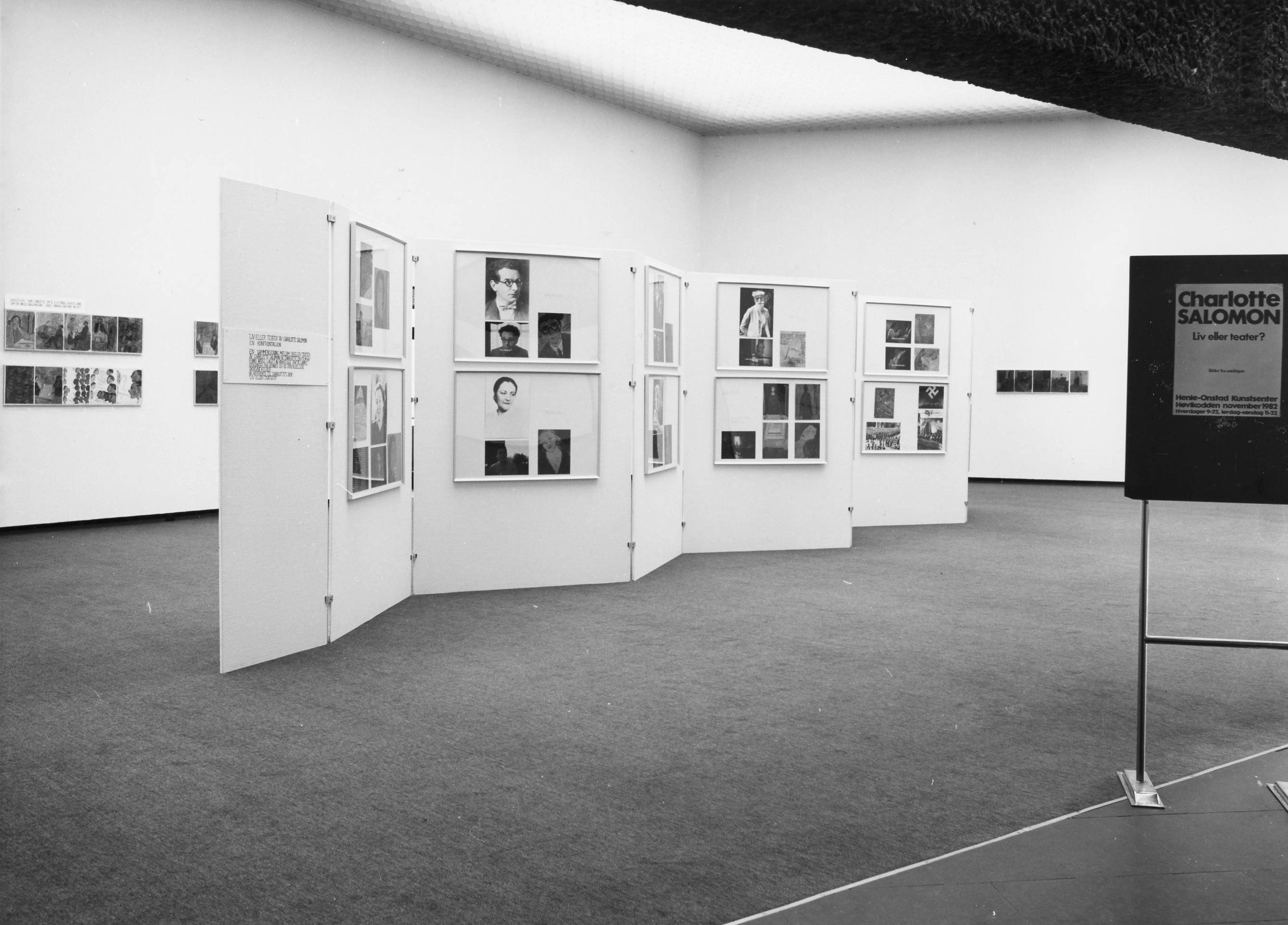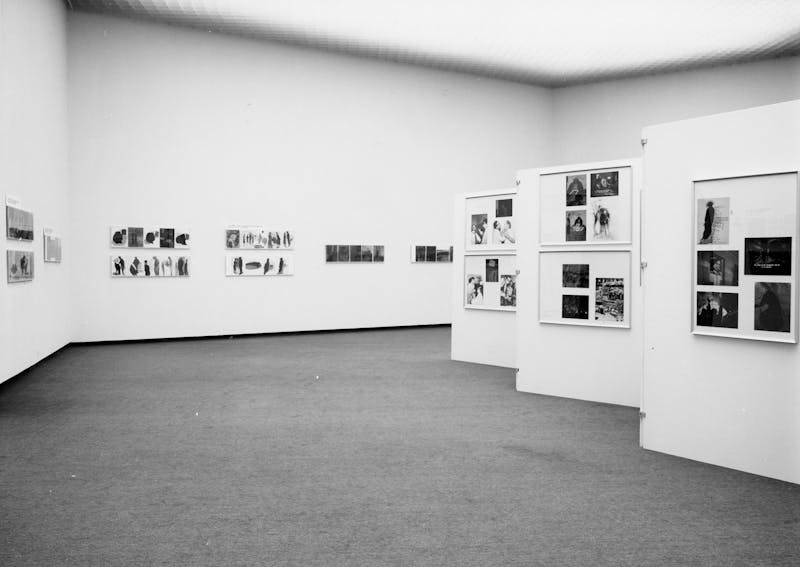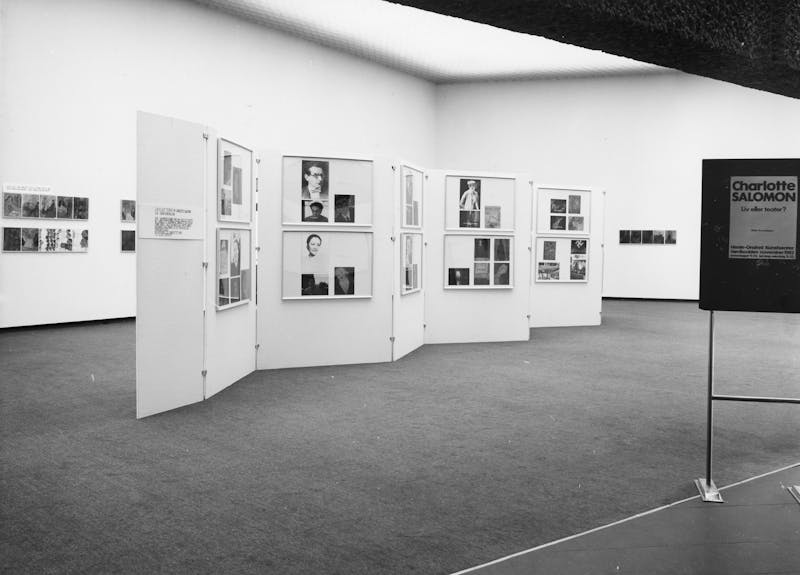Charlotte Salomon
Life or theatre ?

In the autumn of 1982, Henie Onstad Kunstsenter opened the exhibition Charlotte Salomon: Life or Theater? The exhibition featured 169 gouaches by the German artist Charlotte Salomon (1917-1943), as well as photographs from her short life and a film.
"Keep these safe? They are my whole life.”1
In the summer of 1942, Charlotte Salmon handed over two packages of 769 gouache paintings to an acquaintance, Dr. Moridis, in Villefanche in the south of France. Shortly afterwards, Salomon was captured by the Gestapo and deported. The following year, at the age of 26, she died in Auschwitz. She was then five months pregnant.
The pictures she handed over constituted a kind of autobiography in pictures she had given the title Life? or theater?. The gouaches are in bold colors, vibrant and full of humor, but also dark and serious. With fervor, humor and warmth, she evokes her peculiar fate, which in its poetic style is reminiscent of Marc Chagall (1887-1985). Today they are in the Jewish Historical Museum in Amsterdam, where they have been kept since 1971.
A dark fate
Charlotte Salomon was born in 1917 and grew up in Berlin where her father, Albert Salomon, was a doctor. She was close to her maternal grandparents, especially after her mother, Franziska Grünwald, died when she was nine years old.2 She was named after her mother's sister, who took her own life before she was born.3
Her Jewish father was a quiet man. After her mother died, her upbringing was marked by one governess after another - until her father remarried a well-known opera singer, Paula Lindberg.4 With her stepmother, people and cheerfulness came into the home again. It was with Lindberg that a world of music and art was introduced to Salomon.
Another person who came to play an important role in Solomon's life, was her friend and lover Alfred Wolfsohn. He was her stepmother's voice coach and had his own theories on how to live out your emotions in art.5 Wolfsohn encouraged Salomon and helped her to believe in herself.
She studied at the Hochschule für Bildende Kunst in Berlin, and had almost completed her studies when she had to leave the city in 1938. Salomon was sent to her grandparents, who had fled to the south of France seven years earlier. She was 22 years old when she began her autobiographical work.6
After the outbreak of the war, her grandmother sank into a deep depression and eventually took her own life.7 Shortly after, her grandfather confided in Salomon that her mother, aunt, great-grandmother, and uncle had also committed suicide. For Solomon, this information came as a shock: Was not she then predestined to the same fate?8
This feeling was reinforced and mixed with the Nazi extermination of the Jews - her own people. However, she was able to describe her life in image and text, and in this way managed to turn her destiny into something productive, both for herself and posterity.9 One could say that art became her salvation.10
At Høvikodden
The exhibition shown at Henie Onstad Kunstsenter in 1982 included 169 of her autobiographical gouaches, a selection of photographs from a book about her life, as well as a feature film about Salomon that was shown in the auditorium.
Charlotte Salomon designed her work as a play she called Leben? oder Theater? (Life? Or theater?) with the subtitle Ein Singspiel (A music play). Although it was far from a comedy, it had a farce-like form, emphasized by the use of text as in comics,11 local newspaper Budstikka wrote.
Musical references to operas and more popular songs were included. The work was divided into a prelude, a main part and an epilogue, and was equipped with a full cast. However, it was not meant to be performed, but read. The work cannot be said to be a pure autobiography - it is too dramatic and at times also too satirical. Salomon gave the characters new names, and referred to herself in the third person as Charlotte Kann.12 Today, the work exists as a whole in book form.
Reception
"The encounter with Charlotte Salomon's art does not easily escape the viewer,"13 Budstikka wrote about the exhibition.
"Tragic fate and surprising art. Warmth and humanity. That is what we experience in the encounter with Charlotte Salomon's art. On Thursday, an exhibition opens at Henie-Onstad Kunstsenter at Høvikodden, which shows works by the gifted, young, and until fairly recently unknown German-Jewish artist,"14Aftenposten wrote.
"This is an artistic document that is of interest even today," Arbeiderbladet wrote, Thursday 11 November 1982.
References
-
Ukjent forfatter. «Selvbiografi i bilder på Høvikodden: Charlotte Salomon - liv eller teater?» Budstikka. 04.11.1982.
-
Bugge, Erle Mostue. «Charlotte Salomon: Kunstnerkamp mot undergang og depresjon.» Aftenposten. 02.11.1982.
-
Ibid.
-
Ibid.
-
Ukjent forfatter. «Selvbiografi i bilder på Høvikodden: Charlotte Salomon - liv eller teater?» Budstikka. 04.11.1982.
-
Bugge, Erle Mostue. «Charlotte Salomon: Kunstnerkamp mot undergang og depresjon.» Aftenposten. 02.11.1982.
-
Ibid.
-
Bugge, Erle Mostue. «Charlotte Salomon: Kunstnerkamp mot undergang og depresjon.» Aftenposten. 02.11.1982.
-
Ukjent forfatter. «Selvbiografi i bilder på Høvikodden: Charlotte Salomon - liv eller teater?» Budstikka. 04.11.1982.
-
Ukjent forfatter. «Selvbiografi i bilder på Høvikodden: Charlotte Salomon - liv eller teater?» Budstikka. 04.11.1982.
-
Ibid.
-
Ukjent forfatter. «Selvbiografi i bilder på Høvikodden: Charlotte Salomon - liv eller teater?» Budstikka. 04.11.1982.
-
Bugge, Erle Mostue. «Charlotte Salomon: Kunstnerkamp mot undergang og depresjon.» Aftenposten. 02.11.1982.
-
Bugge, Erle Mostue. «Charlotte Salomon: Kunstnerkamp mot undergang og depresjon.» Aftenposten. 02.11.1982.










